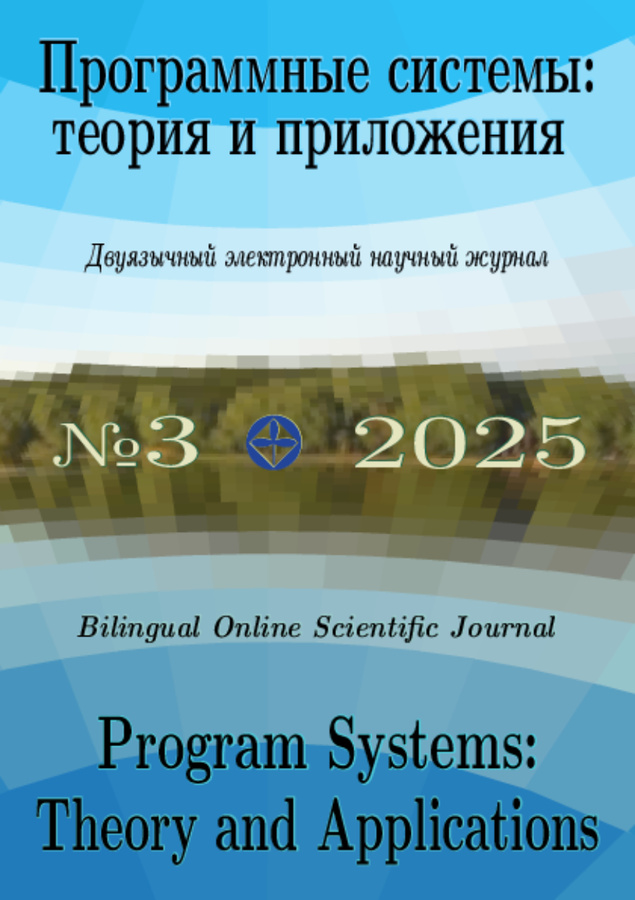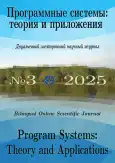Program Systems: Theory and Applications
ISSN (online): 2079-3316
Founder: Organization of Russian Academy of Sciences Program Systems Institute of RAS
Editor-in-Chief: Sergei Mikhailovich Abramov, corresponding member RAS, Doctor of Sc.
Frequency / Assess: 4 issues per year / Open
Included in: White List (4rd level), Higher Attestation Commission List, RISC
The bilingual electronic scientific journal “Software Systems: Theory and Applications” publishes carefully presented new results in the field of information science, computing and management in English and English.
The journal was the first to publish bilingual articles with switching the language of the page being read, which is valuable for mastering the non-native language of scientific communication.
All publishing operations from accepting manuscripts and reviewing to the work of editors on permanent text and design, posting full texts and metadata on journal websites and bibliographic services mathnet.ru, elibrary.ru, crosref.org etc. are performed free of charge.
High-quality preparation of the author's original in the LaTeX system speeds up the publication of articles accepted for publication.
Certificates of registration of mass media: Эл № ЭЛ № ФС77-51924 from November 29, 2012
Current Issue
Vol 16, No 3 (2025)
Quantum machine learning methods for intrusion detection in software-defined networks
Abstract
 3-22
3-22


Strong control improvement method for non-homogeneous discrete systems
Abstract
 23-40
23-40


Performance and fault tolerance of the ideal system network via additional parallelity
Abstract
 41-68
41-68


Identifying healthy and diseased areas of plant leaves using neural networks
Abstract
 69-97
69-97












